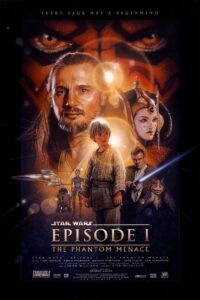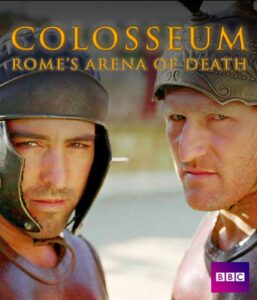As an avid fan of film and television, music, and literature, there are elements that appeal to me in these aspects and those that do not. I have always wanted to write about almost all of the above that inspire me but I know it is only certain ones that I can do. That is why here, I would like to share with all of you three works that are dear to me and always will be. It is not just about their plot; they also follow their Specifity and references to other works, how they inspire me in various areas of my life as a writer and how they could have been done better.

(Novel)
Author – Michael Crichton
Published – November 20th 1990
Publishers – Arrowbooks Ltd, the Random House Group Ltd, London SWIV
Plot
A wealthy entrepreneur clones and brings dinosaurs back to life with the help of his company, InGen, on an island that he nicknames ‘Jurassic Park’, intending to create a theme park. Before its public opening, he invites his two grandchildren, a palaeontologist, a palaeobotanist, a chaos theorist (who is also a university professor), and his lawyer for endorsement. Initially, the visitors are fascinated by the return of the animals who the planet lost 65 million years ago, but chaos ensues when a rival company member sabotages the park while collecting elements important to it, as its animals break out and begin stalking their successors who they have never met before while everyone struggles to fight for their survival.
Specifity and References to other works
This is a uniquely realistic science fiction text with major themes of innovation in biotechnology and Palaeontology, presented as entertainment. As a science fan who appreciates Michael Crichton’s scientifically based work, I particularly love how this novel conveys a message of hope regarding using cloning to revive extinct species, portraying it as a possibility in the present.
Crichton’s story feels realistic due to characters loosely based on real people like Alan Grant (modelled after palaeontologist Jack Horner) and John Hammond, who is seemingly a ‘dark Walt Disney’ entrepreneur who creates Jurassic Park as both a dinosaur sanctuary and a theme park. These characterizations and Crichton’s use of ‘show don’t tell’ style, with complex language, leave a lasting impression while he narrates the story from multiple points of view.
The novel was the basis for a 1993 movie of the same name which was directed by Steven Spielberg. As mentioned above the movie was far easier to follow than the novel since it altered certain scenes for better clarity. The film presented a more sympathetic portrayal of the main characters compared to the novel. Its success led to a 1995 sequel titled The Lost World, also written by Crichton, and a 1997 film version also helmed by Spielberg, additionally maintained a sympathetic tone much like its predecessor.
How it affects me as a writer
I am inspired by Crichton’s ability to use real-life situations and people in fictional situations which I tend to use in some of my work. I also like his style of ‘show don’t tell’ by using complex sentences and narratives in order to create a lasting visual impact for the patient reader. I tend to use a similar context of words when I write a story.
Criticism
While Jurassic Park keeps readers engaged until the end. However, some areas could be improved or omitted. For instance, the opening scenes describing deadly encounters with the predatory dinosaur procompsognathus which distracted from the main theme of dinosaurs returning to Earth. It would have been better to hint at the cloning of dinosaurs in the beginning to maintain focus on the central plot.

(Film)
Director– Michael Crichton
Producer – Rick McCallum
Release Date – May 19th 1999
Distributors – 20th Century Fox and LucasFilm
Plot
Set 32 years before the events of the original Star Wars, the first episode in the saga, introduces the characters at a time when a peaceful planet, Naboo, is invaded by a corrupt trade organisation. Jedi apprentice, Obi-Wan Kenobi, is sent along with his master Qui-Gon Jinn to save Naboo and its queen Padme (Naberrie) Amidala from being distortedly ruled. In the midst of this conflict, the Jedi meet a boy called Anakin Skywalker on the planet Tatooine whom Qui-Gon Jinn believes can bring balance to the energy field known as the Force which everyone in the Galaxy, including the Jedi, rely on for power. Unbeknownst to all, including the Jedi the true cause of the invasion is an ancient evil, ready to strike again.
Specifity and References to other works
Since its release in 1977, Star Wars has captured hearts worldwide, drawing fans into its world of characters and events. Its immense popularity led to two sequels and the creation of the prequel, The Phantom Menace. This film holds a special place in my heart as a favorite contemporary epic, especially due to its setting before Darth Vader’s rise to power, focusing on the young Anakin Skywalker. The movie cleverly references events from the original films, featuring iconic characters like Obi-Wan Kenobi, the evil Emperor (known as Darth Sidious), R2D2, C3PO, Yoda, Jabba the Hutt and (his majordomo) Bib Fortuna. The story unfolds through the perspective of Jedi master Qui-Gon Jinn and his apprentice Obi-Wan, mirroring the original film’s perspective by the droids R2D2 and C3PO.
George Lucas creates an otherworldly theme for the films while incorporating real-life literary and historical references, allowing viewers to connect with this unique environment. Themes like the hero’s journey, planetary domination mirroring real-world empires, and space dogfights resembling World War II aero dogfights are evident. The characters’ names draw inspiration from heroic and villainous mythological figures, like Yoda from the Sanskrit word ‘Yodha’ for warrior and Qui-Gon from the Chinese name Qigong. Lucas develops diverse and intriguing characters with distinct traits, affiliating them based on race, religion, position, and birthplace. Themes of family bonds, master-apprentice relationships, friendships, and interdependence between nations are also significant aspects of all films.
The Phantom Menace makes full use of digital technology, one of two reasons why Lucas chose to tell the back-story of Star Wars, apart from the decision to reveal the true identity and story of the famous Darth Vader due to the character’s iconic status. As with the original films, The Phantom Menace retains its tone through its musical score (composed by John Williams) which provides emotional anchors to particular scenes, as well as the affiliation of both heroes and villains.
How it affects me as a writer
Lucas has made a significant impression on my ability to conceive stories and create characters from different worlds based on those in mythology, history and legends. His vivid imagination which has a striking parallel to things that we know of allows me to use this technique in different situations.
Criticism
Lucas’s film features confusion in characterizations, especially concerning interplanetary relationships, intriguing and sometimes disinteresting viewers. While The Phantom Menace remains faithful to the original Star Wars films, it lacks certain elements found in the originals. Assumptions are made that audiences know details of the Force from the first film, leading to its absence of explanation in this film. The introduction of midi-chlorians seems unnecessary since they were not mentioned in previous films. The term ‘lightsaber’ is replaced with ‘laser sword,’ and Yoda’s character despite remaining true, is visually different. I personally believe bringing back characters like Chewbacca would have added to the Star Wars saga. More exploration of planets like Chewbacca’s homeworld (now known as Kashyyyk), Alderaan, and Malastare could have been beneficial. Nevertheless, Tatooine’s return is a relief amid the introduction of two new planets, Naboo and Coruscant.

(Documentary)
Director – Tilman Remme
Executive Producers – Jonathan Stamp and Laurence Rees
Release Date – October 13th 2003
Distributors – BBC
Plot
Verus, a man from Moesia a small kingdom near Ancient Rome is enslaved while defending his homeland and is forced into building what will become a new arena of combat which the new Emperor Titus is planning. Verus sees an opportunity at ‘freedom’ when he forces his way into a school of gladiators along with his Celtic friend Priscus. Both men succeed in training and soon graduate as true gladiators, equipped to finally battle in the arena which they helped to construct, the Colosseum. Along his journey as a Gladiator though, Verus should realize that being a gladiator is more than just being a fighter, it is about survival, support, and above all, freedom through death or success.
Specifity and References to other works
This documentary effectively explores life in Ancient Rome, particularly the lives of gladiators and other entertainers at the Colosseum. It presents well-researched facts that challenge viewers’ preconceptions and shed light on various aspects of gladiator life. The story follows Verus, who forces himself into training as a gladiator only to escape slavery, showcasing his determination to succeed despite seemingly insurmountable odds. The narrative also delves into his friendship with Priscus, which eventually leads to a dramatic final showdown in the arena due to Verus having provoked Priscus when he first met him. Additionally, the documentary reveals lesser-known facts about gladiators, such as their initial non-lethal fights and their relatively equal status in society.
The Gladiators of Ancient Rome were early entertainers, leading to the development of various forms of pleasure for a larger audience, such as dancing, music, and sports. However, these entertainments were mainly accessible to the select elite with sophisticated tastes and means for training and enjoyment.
This one-piece documentary resembles Ridley Scott’s 2000 film Gladiator but with a lighter tone. It is narrated in Roman language with English narration from the central character’s perspective. The themes of slavery, survival, battle, and freedom are explored, remaining faithful to historical events unlike Scott’s film which despite being historical also contained fictional elements.
How it affects me as a writer
The storyline of this documentary has inspired me to add in my stories, the journey of a person in a lacklustre or unpleasant circumstance and how an event in their life changes it for good. Along the way, the characters stay focused on a certain objective and do not give as much focus as to what their actions may result in for them or those close to them.
Criticism
The documentary throws in a few disturbing scenes such as a main example being of a beast-master’s execution in the Colosseum, ordered by the Emperor, when the Lions he trained refuse to attack the criminals thrown to them. This appeared to be a horrible way of solving a certain situation. Also, bits and pieces of history such as the Pompeii eruption are thrown into the storyline at some points, thrusting the characters into the situation and depicting how they come out of it. Despite this, both these serves a purpose of providing insight into the life of a gladiator in Ancient Rome.
THE END

